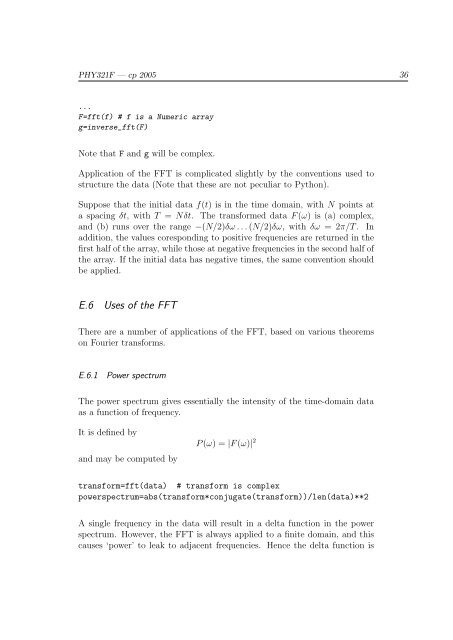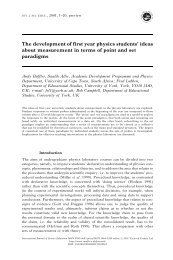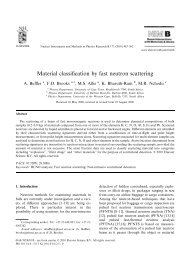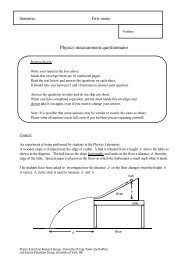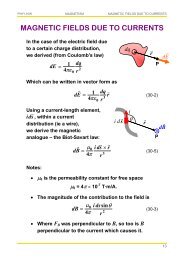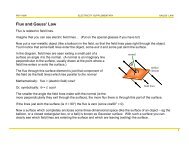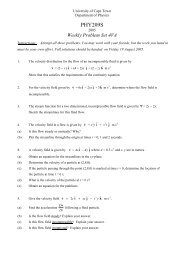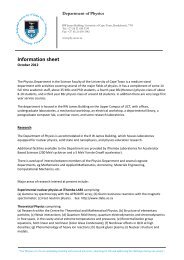Create successful ePaper yourself
Turn your PDF publications into a flip-book with our unique Google optimized e-Paper software.
PHY321F — cp 2005 36<br />
...<br />
F=fft(f) # f is a Numeric array<br />
g=inverse_fft(F)<br />
Note that F and g will be complex.<br />
Application of the FFT is complicated slightly by the conventions used to<br />
structure the data (Note that these are not peculiar to Python).<br />
Suppose that the initial data f(t) is in the time domain, with N points at<br />
a spacing δt, with T = Nδt. <strong>The</strong> transformed data F (ω) is (a) complex,<br />
and (b) runs over the range −(N/2)δω . . . (N/2)δω, with δω = 2π/T . In<br />
addition, the values coresponding to positive frequencies are returned in the<br />
first half of the array, while those at negative frequencies in the second half of<br />
the array. If the initial data has negative times, the same convention should<br />
be applied.<br />
E.6 Uses of the FFT<br />
<strong>The</strong>re are a number of applications of the FFT, based on various theorems<br />
on Fourier transforms.<br />
E.6.1<br />
Power spectrum<br />
<strong>The</strong> power spectrum gives essentially the intensity of the time-domain data<br />
as a function of frequency.<br />
It is defined by<br />
and may be computed by<br />
P (ω) = |F (ω)| 2<br />
transform=fft(data) # transform is complex<br />
powerspectrum=abs(transform*conjugate(transform))/len(data)**2<br />
A single frequency in the data will result in a delta function in the power<br />
spectrum. However, the FFT is always applied to a finite domain, and this<br />
causes ‘power’ to leak to adjacent frequencies. Hence the delta function is


